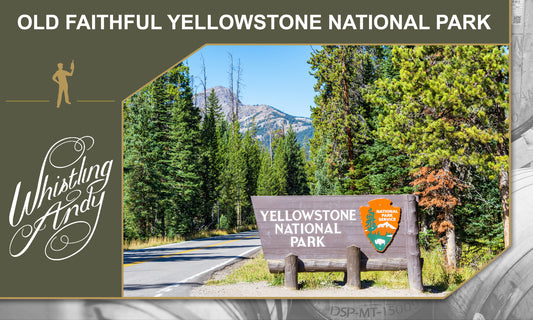Few beverages have a history steeped as deep in the heart of America as bourbon. For some, it’s more than a drink — it’s a heritage.
That heritage represents hard work, dedication, and never cutting corners when it comes to producing the highest quality final product. But in the 19th century, that heritage came under threat by pervasive adulteration and imitation that was not only dishonest, but at times dangerous.

Never ones to rest on their laurels, the bourbon industry decided to take a stand against those who posed an imminent danger to their good reputations. Their solution arrived in the form of 1897’s Bottled-in-Bond Act.
The first consumer protection law to be passed in the United States, the Bottled-in-Bond Act changed how consumers saw not only bourbon production, but also how they saw all goods they purchased. This act revolutionized the world in its own way and preserved bourbon’s heritage so we can enjoy its rich history to this day.
A brief history of bourbon’s beginnings
At the beginning of the 19th century, unaged whiskey was popular among Americans, but producers were always looking for ways to improve the drink’s harsh taste. Initially, prior to aging whiskey, some means of improving the flavor — also known as rectifying — included things such as using a wool blanket to filter the drink through a barrel of sweet-flavored charcoal or adding fruits to the mixture.
By the 1820s, some whiskey makers found that aging the liquid in charred barrels was an excellent way to temper the taste, and that is how bourbon was born. This became the preferred method for improving the taste of whiskey, and consumers began to gravitate more towards this new, brown-colored alcohol. Over time the process of making bourbon has evolved and today can only be called as such if it meets a strict set of rules that govern the ingredients used in the mash, the type of wood used in the barrels it will age in, and the percentage of alcohol it can contain.
The Need for Bottled-in-Bond
Because the method of making bourbon was a time-consuming process, rectifiers — aka non-distilling producers — who were simply out for a quick buck did not want to invest the time necessary for making a quality product. They would use any means possible to ensure they were competitors in the market, even at the cost of the consumer’s health.
To achieve the look and taste of bourbon, these rectifiers would often take unaged whiskey and go to great lengths to achieve a similar hue to properly aged bourbon. The list of methods that rectifiers used to achieve the correct color to bourbon is long. They included methods such as blending together two or more whiskies or adding ingredients such as honey, beets, prune juice, generic color and flavoring, caramel, burnt sugar, or tea.
Other rectifiers used even more unscrupulous means to achieve the desired effect. Some of those shocking additives include: tobacco juice from spittoons, iodine, charred animal bones, and even shoe polish, gasoline, turpentine, or ammonia.
By using these methods, rectifiers could sell their products at a lower price than legitimate bourbon makers. They did not seem to consider, or they simply did not care, that their products were causing consumers to become ill or die in some extreme cases.
For both economic and ethical reasons, legitimate bourbon producers pushed for legislative changes and looked to the government to enact regulations on the bourbon market.
The age of regulation
The Bottled-in-Bond Act was not passed without a fight from rectifiers. Those opposing the act who were running legitimate businesses felt they were being pushed out of business and proponents of the act were trying to monopolize the industry. Legitimate rectifiers also argued that there was an art to blending spirits, and the act would put that art in jeopardy.
Despite their objections, the Bottled-in-Bond Act was passed in 1897. The Act stated that in order to receive one of the green government-approved stamps on their bourbon bottles, manufacturers had to adhere to many stringent requirements. These requirements were:
● The spirits were distilled in the same season between January and June or July and December
● Distillation must take place at only one distillery
● It must be aged for at least a four-year period
● It must be bottled at 100 proof
● The distillery must be on the spirit’s label
● If the distillery is different from the bottling location, that location must also be on the label
● The only additive to the spirit can be water
The production process was overseen by a government agency, ensuring that the necessary procedures were in place and always adhered to.
The label instilled confidence in the buying community because they knew they were purchasing an authentic bourbon that would not be harmful to their health.
In 1906, the Pure Food and Drug Act amended these requirements and stated that if anything was added to neutral spirits, such as coloring or flavoring additives, they had to carry a label stating that the whiskey was “imitation whiskey.”
In 1909, another amendment stated whiskey with added neutral spirits must be labeled as “blended whiskey.”
Bottled-in-Bond today - preserving an American tradition
Today, producers who continue to operate in the same fashion and produce spirits with the Bottle-in-Bond stamp tend to represent quality due to the high standards they must adhere to in order to receive government approval. Because the spirits must be aged for a minimum of four years, the consumer can rest assured that the distiller is not a fly-by-night operation.
The Bottled-in-Bond label also represents a long-standing tradition that shows the distiller’s commitment to producing a product they are proud to serve to the buying public, who continue to keep them in business.
Though the government does not constantly oversee the distillation process as it once did, those distillers who continue to produce spirits that attain the Bottled-in-Bond stamp do so with pride.
Bottled-in-Bond is an American tradition with a rich history, and it continues to signal to consumers that the spirits worthy of this label were distilled with pride and are preserving a great American tradition.





